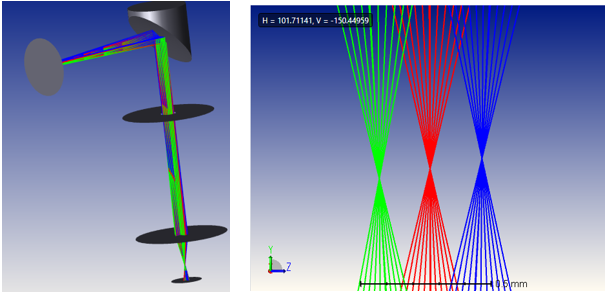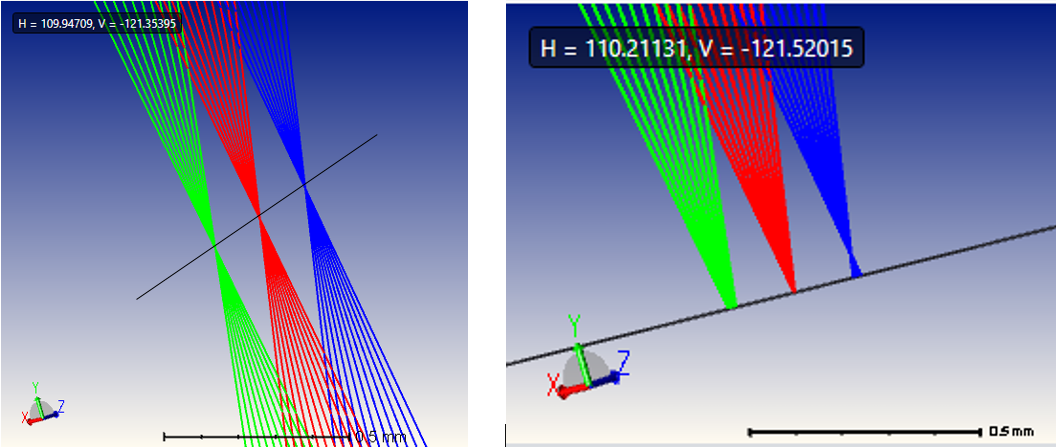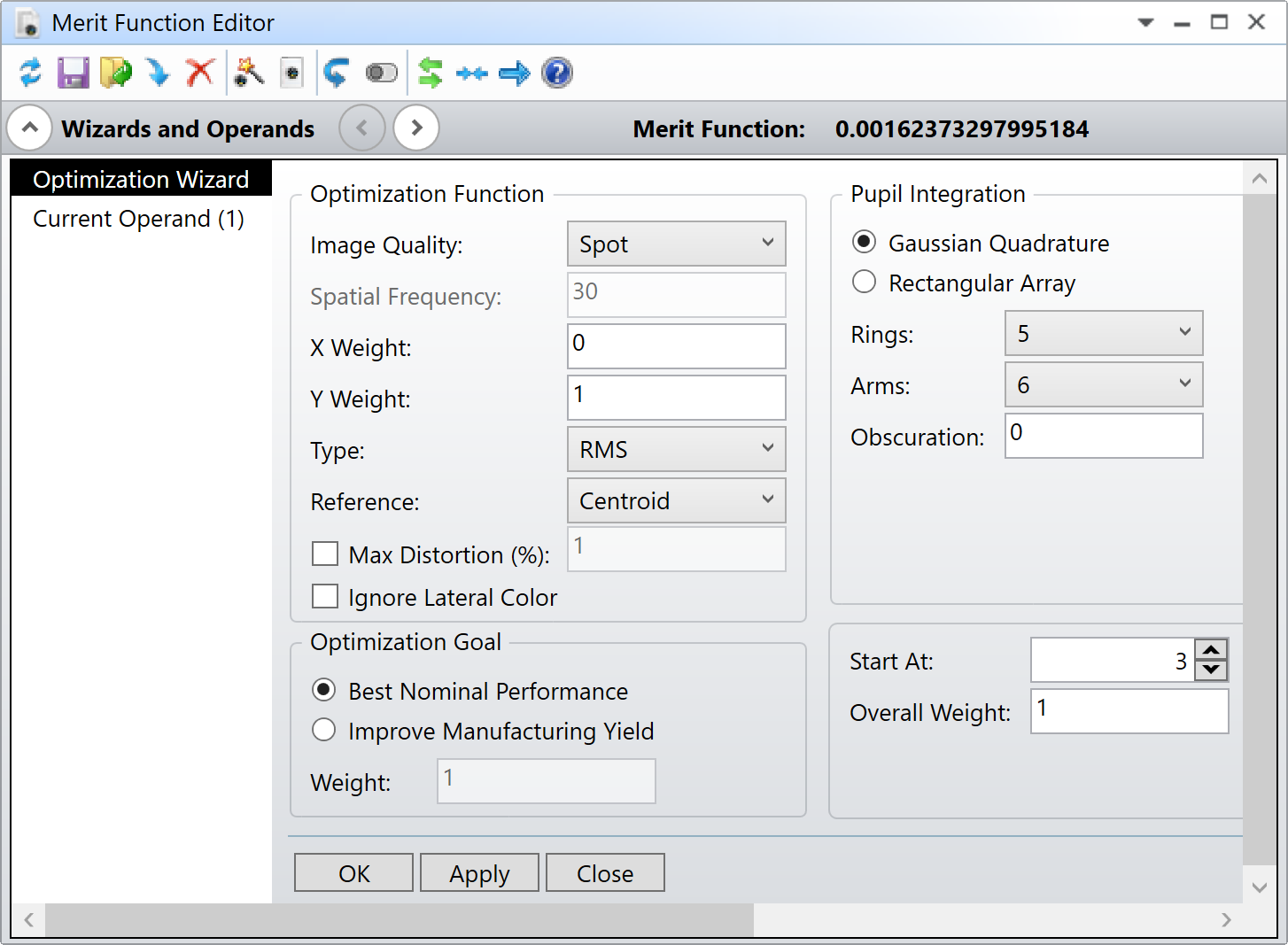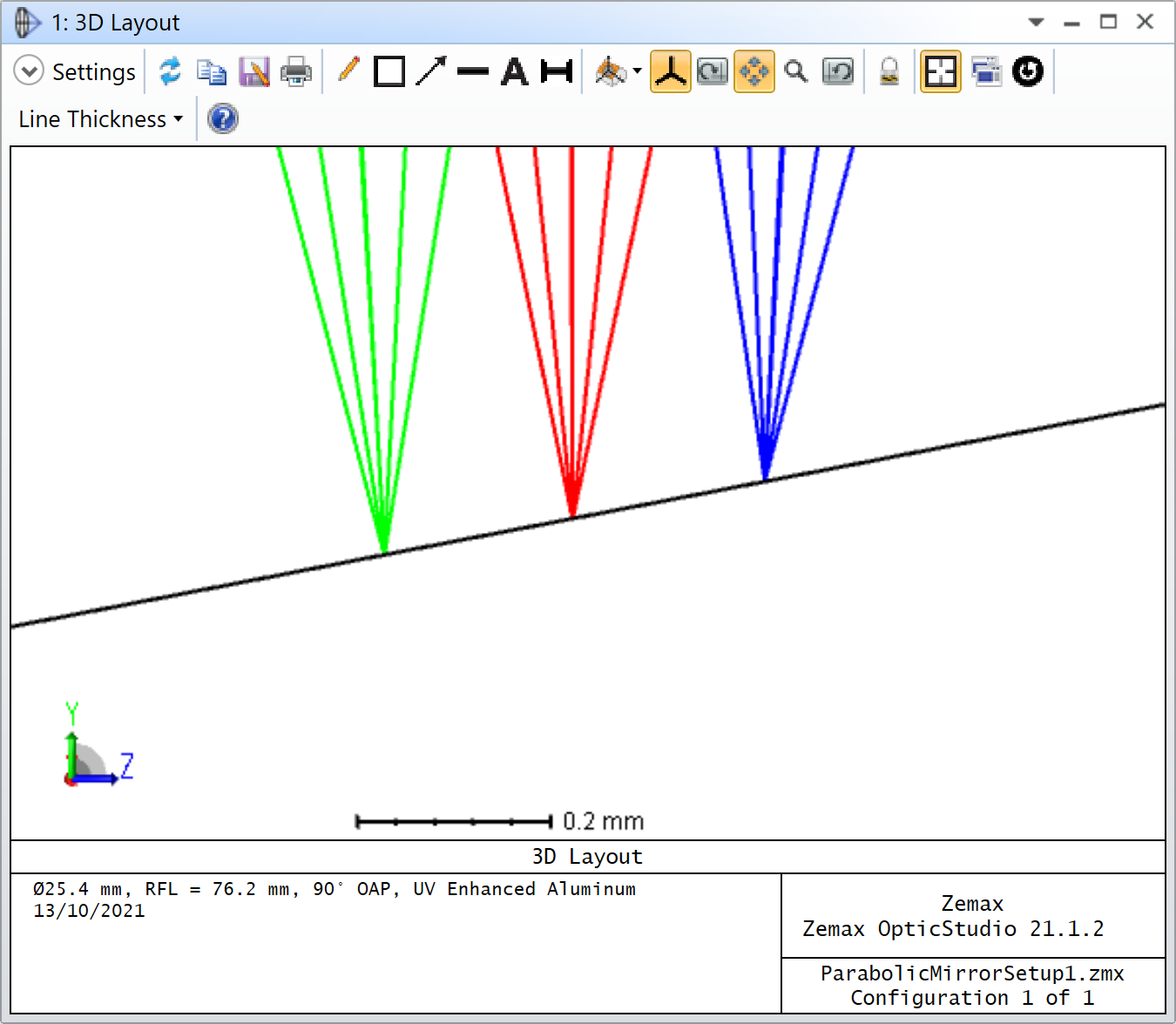Dear Sir/ Mam,
I have been using single Off axis mirror with a paraxial lens. There is a lilt in image is expected.

To know the tilt in a 3D space I used coordinate break. I can see the tilt in x and y with chief ray solve.

- Is it correct to assume the tilt angle is correct with respect to image plane in an off axis system?
- Why the image plane is drawn is not as expected?
-

Expected image plane vs actual drawn image plane - How can I check tilt in z axis?
Regards
Komal Thakur





